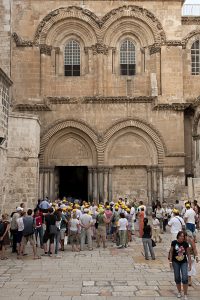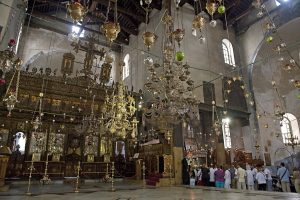Throughout the last 70 years, there has been constant infringement on the Palestinian tourism sector. During the second Intifada, the tourism sector suffered greatly, declining by almost 90 percent, and it didn’t begin to recover until 2003. According to a report by the UN World Tourism Organization, there has recently been a boom in foreign tourism in Palestine. Based on data provided by the Palestinian Central Bureau of Statistics (PCBS) in 2018, about 3 million tourists visited Palestine.
These indications have continued to grow throughout 2019, and it is imperative that we make sure that this trend continues. Increasing tourism is absolutely vital to the Palestinian economy, especially in the long term. The tourism sector has contributed greatly to Palestine’s GDP and has the potential to be one of Palestine’s largest economic sectors.
Holy Land Incoming Tour Operators Association (HLITOA) is a Palestinian registered nonprofit organization that represents the Palestinian incoming tour operators with the goal to increase incoming tourism to Palestine. As tour operators, we have both the opportunity and the responsibility to introduce incoming tourists to the best the Holy Land has to offer. We have a rich history, incredible cultural sites, and beautiful landscapes that captivate people from all over the world.

However, the Palestinian tourism industry has yet to fully capitalize on its potential and develop across the value chain. Historical events have shaped the tourism sector that we know today, going back to the fourth century when people would make pilgrimages to the holy sites. By the early nineteenth century, several monasteries and hospices were established to cater to the large influx of traveling pilgrims; and by the late nineteenth century, the tourism industry really began to develop with the establishment of several hotels and tour operators across the country, as travelers, explorers, and pilgrims from all over the world came to visit the Holy Land. In the 1860s, Palestinian companies began to organize journeys for travelers to the country which often included a guide and a translator. This growth continued and evolved with the establishment of cafés, restaurants, souvenir shops, and museums. However, things began to take a turn in the twentieth century due to complicated political circumstances.
Since the 1950s, there has been significant development in the tourism industries of many countries within the region; however, prolonged conflicts have hindered this development within Palestine. The situation only got worse after the 1967 War, when the number of tourists and quality of businesses decreased significantly, not only for the Palestinian tourism sector but for the hotel industry as well. What makes the Holy Land a unique destination is the fact that, despite security concerns, people – especially pilgrims – will still come to visit the holy sites. This industry has traditionally focused on pilgrimage tours, although it is still underdeveloped. Religious tourism has always been a key strength for tour operators that promote the Holy Land as a travel destination, but there are many more touristic activities that can be focused on and cultivated besides religious tourism.
The Palestinian tourism sector has overcome great obstacles over the last 20 years, and Palestine is now one of the fastest-growing tourism destinations worldwide. It is through resilience and hard work that the tourism sector has become significant and competitive.

There have been many key factors driving this improvement, including the effective use of awareness-raising initiatives, media coverage, and electronic communication. The Palestinian Ministry of Tourism has accomplished a great deal in terms of developing the tourism sector, including getting the private and public sectors to work together. Although these steady changes have shown significant promise, the current political climate continues to hinder development. Compared to neighboring countries, the Palestinian tourism sector’s direct contribution to the GDP is significantly less. For this reason, international outreach is a crucial part of HLITOA’s strategy in promoting Palestinian destination products. Through continued efforts of cooperation with organizations, associations, and policy makers, HLITOA has taken steps to actively promote Palestine as a travel destination.
There are many factors that need to be addressed in improving the tourism sector as a whole, including investing in the Palestinian infrastructure for a healthy and thriving tourism sector; using tourism as an instrument to promote a positive image of Palestine internationally; developing tourist facilities; developing the tourism scope; reforming Palestinian tourism law; and creating a coherent national strategy.
We must work together to foster change as the potential of the tourism sector can lead to development in local resources and economic growth. According to the World Tourism Organization, international tourist travel is growing all over the world at faster rates than other economic activities. Palestine has all the essential elements needed, including attractions, amenities, and infrastructure, to develop into an independent and successful travel destination.


